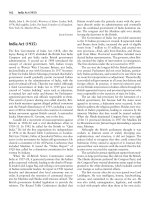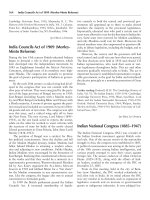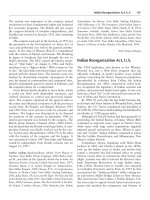Authors libby rittenberg 244
Bạn đang xem bản rút gọn của tài liệu. Xem và tải ngay bản đầy đủ của tài liệu tại đây (386.71 KB, 1 trang )
$500 per day (=$0.50 per can times 1,000 cans per day). An increase in
price to $0.55 reduced the quantity demanded to 880 cans per day. We
thus have an average quantity of 940 cans per day and an average price of
$0.525 per can. Computing the price elasticity of demand for diet cola in
this example, we have:
Percentage change in quantity demanded=−120/940=−12.8%
Percentage change in price=$0.05/$0.525=9.5%
Price elasticity of demand=−12.8%/9.5%=−1.3
The demand for diet cola is price elastic, so total revenue moves in the
direction of the quantity change. It falls from $500 per day before the price
increase to $484 per day after the price increase.
A demand curve can also be used to show changes in total revenue. Figure
5.3 "Changes in Total Revenue and a Linear Demand Curve" shows the
demand curve from Figure 5.1 "Responsiveness and Demand" and Figure
5.2 "Price Elasticities of Demand for a Linear Demand Curve". At point A,
total revenue from public transit rides is given by the area of a rectangle
drawn with point A in the upper right-hand corner and the origin in the
lower left-hand corner. The height of the rectangle is price; its width is
quantity. We have already seen that total revenue at point A is $32,000
($0.80 × 40,000). When we reduce the price and move to point B, the
rectangle showing total revenue becomes shorter and wider. Notice that
the area gained in moving to the rectangle at B is greater than the area lost;
total revenue rises to $42,000 ($0.70 × 60,000). Recall fromFigure 5.2
"Price Elasticities of Demand for a Linear Demand Curve" that demand is
elastic between points A and B. In general, demand is elastic in the upper
Attributed to Libby Rittenberg and Timothy Tregarthen
Saylor URL: />
Saylor.org
244









